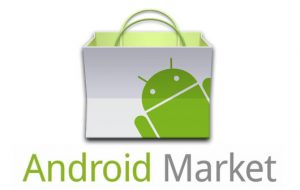Ten years ago today Optus launched Australia’s first Android phone, the HTC Dream after its success in the US as the T-Mobile G1. Since then, Android has taken the country by storm with much success in many areas. So much so that Android now outsells the iPhone in Australia.
In 2009, dumbphones ruled the Australian mobile market. Smartphones were limited to older PalmOS devices (who remembers the Trek?), Windows Mobile or a heavily feature hamstrung iPhone. At the time, the most popular mobile OS on the market was Symbian from Nokia.
The HTC Dream, by today’s standards, was barely a smartphone with some very average specs and no Bluetooth support at release. The Android operating system was a mere fraction of what it has become today, but that hardware keyboard was a delight to use.
In 2019, the specs of the HTC Dream would be terrifying. Terrifyingly bad, that is. 10 years ago, though, these were amongst the best of the best:
- 3.2″ 320×240 resolution TFT screen
- 528 MHz ARM 11 Qualcomm(MSM7201A) CPU with Adreno 130 GPU
- 192 MB RAM
- 256 MB ROM with microSD Card Slot
- 3.15 MP Camera
- Wi-Fi 802.11 b/g, Bluetooth v2.0 with A2DP, GPS
- 2100MHz HSDPA, 7.2 Mbps; HSUPA 2 Mbps
- Li-Ion 1150 mAh battery
- Stand-by Time : Up to 406 hours
- Talk time Up to 5 h 20 min
- Hardware Keyboard and Trackball
- 117.7×55.7×17.1mm @ 158 grams
Even the average Wear OS smartwatch would run rings around the Dream in most categories.. but it was a special phone anyway.
I did not buy myself a HTC Dream; I had the same phone by a different name. I had already purchased myself the original T-Mobile G1 from the US a month or so before (and rooted it straight away using telnet beginning my love of hacking phones).
It was the T-Mobile G1/HTC Dream which started my love affair with Android and it is still going strong today. The hacking in those days was raw – no rootkits or toolkits back then. When you hacked something you felt like such a l337 h4ck3r.
In those days you could check the Android Market at the end of a days work and check out all of the apps that had been added that day — there certainly was not thousands being added every day!
By March of 2009 there were just 2,300 apps on the Android Market. Today there is over 2.6 million apps. It’s grown a little.
At first those who purchased the first HTC Dream could not purchase paid apps and it took over a year before they were available, six months after Vodafone and Telstra made them available to customers.
Since then, we have all been through quite a few Android phones and they have come a long way. Now Android goes from strength to strength gaining popularity and growing its customer base every year.
We now even have an Australian website dedicated to Android (and it’s not half bad either):

If you look at what Android has become in the past 10 years, it is hard to imagine how much it will change in the next 10. Who would have thought we’d be at this stage with phones like we have in 2019?
Not us.





